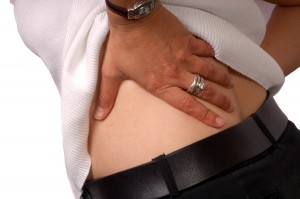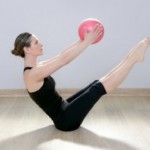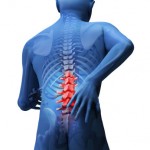Lower Back Pain From Car Seats
Prolonged hours of sitting in a poor ergonomic posture during desk work, while driving, or during household work may be the cause of lower back soreness. According to this article, lower back pain from car seats is often a result of the fact that most cars do not have their seats designed to provide the correct lumbar support. This may lead to incapacitating pain for weeks. Exercises for strengthening the core muscles and yoga may be useful, but spinal extension exercises can be of immense help to combat the effects of hours of sitting. Lumbar rolls also can come of great use in the car, as it helps in the proper alignment of the spinal cord, and provides support while recovering from acute lower back problems.
Lower Back Pain From Car Seats
Knowing how to sit in the car properly is vital in avoiding back issues.
Contributing in no small way to back pain are car seats, many of which have inadequate lumbar support and, often as not, no adjustment whatsoever. In those with adjustable lumbar support, it is invariably inadequate. Only in the higher value vehicles with lumbar air pumps is adjustability truly up to snuff.
So what can be done about limiting symptoms and reducing or even preventing recurrences? Back in the mid-90s when Toyota used to make cars locally, they touched base with the McKenzie Institute, which developed an ergonomic seat for the Corona and Corolla models. This had added lumbar support and simply felt right. Even to this day none of the smaller (supermini/compact) mass market cars come close to providing adequate lumbar support adjustability. My search for lumbar rolls led eventually to rediscovering the McKenzie Institute.
For the past few years, I have been experiencing intermittent bouts of lower back pain, most of which are incapacitating for weeks rather than days. Naturally, one tries to do something about this to prevent a recurrence. I tried strengthening core muscle groups by doing situps, and went to yoga regularly, both of which helped but didn’t prevent recurrences.
It was the search, as mentioned, for the lumbar roll that led to my discovering the Treat Your Own Back book
What the author suggests is that in our daily routine we tend to flex the spine way more than we extend it, and for best spinal health, you need to be doing spinal extension exercises regularly to counteract the effects of long-term slouching at a computer screen or behind the wheel of a vehicle.
The McKenzie Institute even recommends doing this form of exercise to hasten the recovery from an episode of back pain, beginning by gently extending the spine, resting on your elbows rather than straightening your arms and supporting your upper body on your hands. Do this often and your recovery is foreshortened.
What helped me also was buying some of the lumbar rolls, both for the car and for home and day job work stations. These not only help to align your spine better while sitting at your desk or in your car, but also relieve tenderness while recovering from an acute episode of lower back pain. Inflatable rolls are available as well, and are recommended for airline flights.
Long hours of driving can result in lower back pain from car seats, as very few cars have their seats designed in an ergonomic way. To provide adequate support to your spine, keep doing spinal extension exercises. Lumbar rolls provide additional support and proper alignment of the spine, which can help in preventing, as well as recuperating, from lower back pain. Inflatable rolls are easy to carry to stick behind you to adjust your posture as long as you have enough puff to blow it up.
This video discusses the “Spine Relaxer” – the adjustable lumbar cushion that has patents in nine countries. The concept of the “S” Logo has been designed with the human vertebrae in mind.
In this video Lorna Kennard – Craniosacral therapist and sports massage expert and chiropractor Rachael Wall, talk us through some of the Sittingwell range of specialist back care products which can give you support whilst driving to to avoid back pain.
Another video by Lisa Ann McCall – Physical Therapist of McCallMethod.com. Being stuck in traffic can be a pain in the butt, but it doesn’t have to be a pain in the back. Improving core stability and balance can happen even sitting in a car.
You might also like:
Tags: Lower Back Pain From Car Seats















